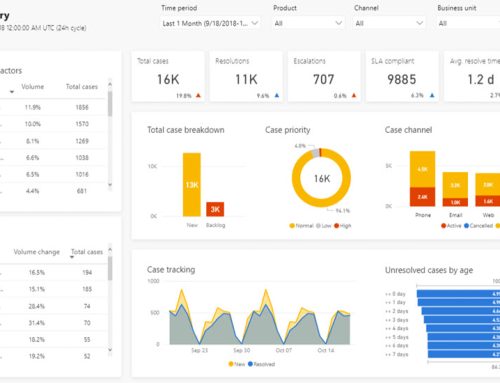Root cause analysis (RCA) is a method of problem solving used for identifying the root causes of faults or problems. A factor is considered a root cause if removal thereof from a problem or fault sequence prevents it from recurring; whereas a casual factor is one that affects an event’s outcome, but is not the root cause. Though removing a casual factor can benefit an outcome, it does not prevent its recurrence with certainty.
Root Cause Analysis is typically associated with operational activities, but there is no reason that the practices that make this tool so useful in getting at the root cause of operational problems can’t be used to determine the cause of a project problem. The root cause analysis method, when properly used, gives the project manager the ability to diagnose a problem that negatively impacted the project and remove it when it is first noticed. Lessons learned are a similar tool, but is not designed to address one particular problem. RCA is one of a family of tools which can be categorized under continuous improvement tools because their purpose is to improve project performance and they can be used over and over.
Root cause analysis should be used when the project manager notices a problem in the project. The problem could be due to any cause, but RCA relies on early detection to be most effective. Don’t wait until the problem is too large to ignore, perform the root cause analysis immediately upon noticing the problem. The problem could be work running behind schedule, a greater than usual number of defects in a product under test, or features missing from the deliverable. There are only two criteria a problem must meet to lend itself to resolution by RCA. It is detected early enough so solve, and it has a negative impact on project performance.
There is a general process that is the backbone of RCA and that process consist of 7 steps:
- Identify and define the problem.
- Gather information about the problem.
- Identify relationship between all the possible causes of the problem by asking the question “why” repeatedly.
- Identify which causes would eliminate the problem if they were removed.
- Identify solutions which will be at the most effective at eliminating the problem, without causing problems. The solution must be within your control.
- Implement the solutions.
- Observe the effect of the solutions and repeat the RCA if necessary.
- Analyze your cause and effect process, and identify the changes needed for various systems. It’s also important that you plan ahead to predict the effects of your solution. This way, you can spot potential failure before they happen
Importance of Cause and Effect
Root cause analysis is a structured team process that assists in identifying underlying factors or causes of an adverse event or a near miss. Understanding the contributing factors or causes of a system failure can help develop actions that sustain the correction. A cause and effect diagram often called a “fishbone diagram” can help in brainstorming to identify possible causes of a problem and in sorting ideas into useful categories. This is indicating the importance of cause and effect during RCA. A fishbone diagram is a visual way to look at cause and effect. It is a more structured approach than some other tools available for brainstorming causes of a problem and is often used together with and before the 5 whys analysis. The problem or effect is displayed at the head of the fish. Possible contributing causes are listed on the smaller “bones” under various object categories. A fishbone diagram can be helpful in identifying possible causes for a problem that might not otherwise be considered if not directing the team to look at the categories and think of alternative causes. Include team members who have personal knowledge of the processes and systems involved in the problem or event to be investigated.
Using Team for Cause and Effect Analysis
The team using a fishbone diagram should carry out the steps listed below.
- Agree on the problem statement (also referred to as the effect). This is written at the mouth of the “fish”. Be as clear and specific as you can about the problem. Beware of defining the problem in terms of solutions (e.g. we need more of something).
- Agree on the major categories of causes of the problem (written as branches from the main arrow). Major categories often include equipment, material, method, people, measurement and environment.
- Brainstorm the possible causes of the problem. Ask why does this happen? As each idea is given, the facilitator writes the casual factor as a branch from the appropriate category (places it on the fishbone diagram).
- Again ask “why does this happen?” about each cause. Write sub causes branching off the cause branches.
- Continue to ask “why?” and generate deeper levels of causes and continue organizing them under related causes or categories. This will help you to identify and then address root causes to prevent future problems.
As the fishbone is a large part of the RCA process, it clearly highlights the importance of cause and effect during RCA.
Tips for Cause and Effect Analysis
- Use the fishbone diagram tool to keep the team focused on the causes of the problem, rather than the symptoms.
- Consider drawing your fishbone on a flip chart or large dry erase board.
- Make sure to leave enough space between the major categories on the diagram so that you can add minor detailed causes later.
- When you are brainstorming causes, consider having team members write each cause on sticky notes, going around the group asking each person for one cause. Continue going through the rounds, getting more causes, until all ideas are exhausted.
- Encourage each person to participate in the brainstorming activity and to voice their own opinions.
- Note that the “five whys” technique is often used in conjunction with the fishbone diagram. Keep asking why until you get to the root cause.
- To help identify the root causes from all the ideas generated, consider a multi voting technique such as having each team member identify the top three root causes. Ask each team member to place three tally marks or colored sticky dots on the fishbone next to what they belie are the root causes that could potentially be addressed.
The root causes of the event are the underlying process and system problems that allowed the contributing factors to culminate in a harmful event. As this example illustrates, there can be more than one root cause. Once you have identified root causes and contributing factors, you will then need to address each root cause and contributing factor as appropriate. The importance of cause and effect in root cause analysis is clearly demonstrated from the value it adds and its essential part of the problem solving process.






